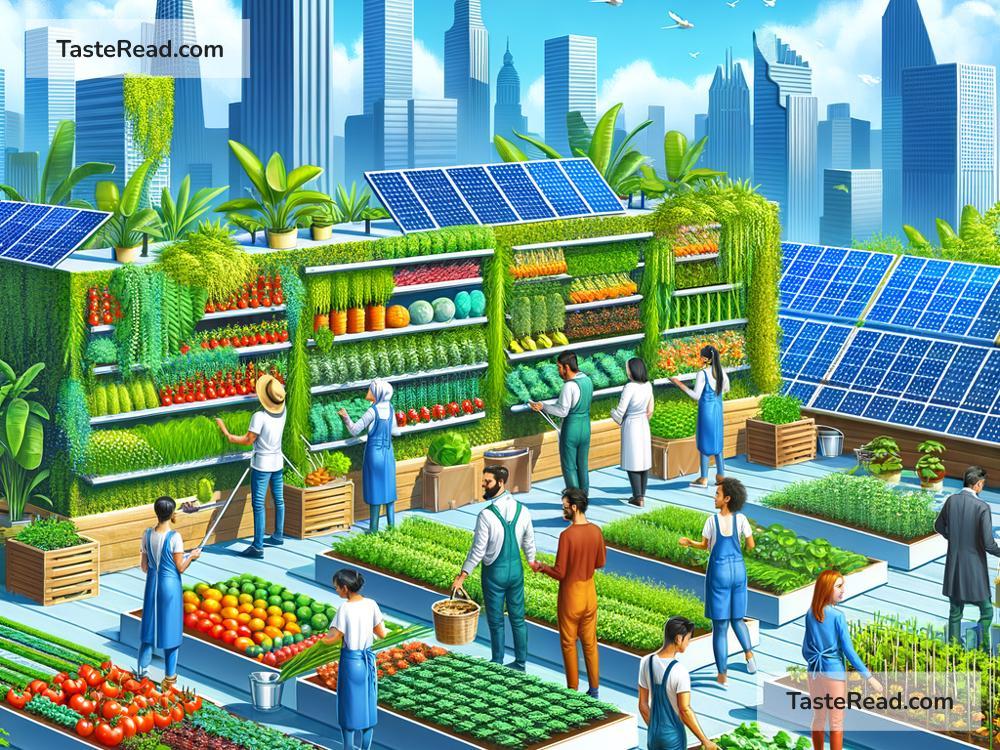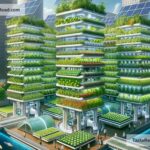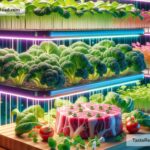The Future of Food and Climate Action: A Recipe for Change
As the world grows hotter and our population continues to expand, one question becomes more important than ever: how will we produce enough food to feed everyone in a way that’s healthy for the planet? Climate change is already affecting farming and food production, and without action, things could get worse. Millions of people might find it harder to grow crops, put food on the table, or access clean water.
But there’s good news: the future of food doesn’t have to be scary. Farmers, scientists, companies, and governments are working together to rethink how we grow, share, and eat food in the age of climate change. From innovative farming techniques to smarter diets, there are amazing ideas on the horizon that could transform the way we eat.
Let’s take a closer look at how food and climate action are connected—and how we can work together to create a more sustainable and delicious future.
How Climate Change Affects Our Food
Climate change isn’t just a global threat—it’s already here, affecting weather patterns, rainfall, temperatures, and the soil farmers rely on. Rising temperatures are making it harder for crops like wheat, rice, and corn to grow in some areas. Extreme weather events, like droughts and floods, are destroying farmland, while heatwaves and storms are hurting livestock.
This is a big problem for farmers, especially those in poorer communities where people depend heavily on locally grown food. Crops aren’t the only things at risk—fisheries and livestock are also facing challenges. Oceans are warming up, forcing fish to migrate, and the growing heat spells trouble for animals raised for food, like chickens and cows.
Climate change doesn’t just threaten the supply of food. It also impacts prices. If harvests shrink due to unpredictable weather, food becomes more expensive. For families who are already struggling to make ends meet, this can mean fewer meals.
New Ways to Grow Food
Luckily, people are coming up with creative solutions to tackle these problems. One idea is to use farming techniques that work with nature, rather than against it. Here’s an example: regenerative agriculture, which takes care of the soil so that it absorbs more carbon dioxide from the air. Healthier soil also leads to stronger crops that survive tough weather. By planting cover crops and rotating crops to protect the soil, farmers can grow more food without damaging the planet.
Another solution is growing food in controlled environments like greenhouses and vertical farms. These systems use less water and space than traditional outdoor farming. Vertical farms grow crops in stacked layers indoors, using LED lights to mimic sunlight. This method allows food to be grown closer to cities, reducing transportation emissions.
Technology is also playing a big role in farming. Scientists are exploring ways to make plants more resistant to droughts, pests, and diseases using genetic improvements. Meanwhile, drones and sensors are helping farmers monitor their fields more closely, so they use resources like water and fertilizer more efficiently.
Smarter Ways to Eat
Another key part of climate action is not just how we grow food, but what we eat. Did you know certain foods take more energy to produce than others? Raising cows for beef uses a lot of land, water, and resources because animals eat a lot before they’re turned into food. Plants like lentils, beans, and nuts are much more efficient to grow, and they’re packed with nutrients.
Because of this, many experts encourage people to eat less meat and dairy as part of a climate-friendly diet. This doesn’t mean everyone has to go vegetarian tomorrow, but small changes can add up to big benefits. For example, swapping a few meat-based meals each week for plant-based options can significantly reduce greenhouse gas emissions.
Plant-based meat alternatives, like burgers made from soy or pea protein, are also becoming more popular—and tastier! These foods mimic the texture and flavor of meat using ingredients from plants. Even lab-grown meat, produced from animal cells, is starting to become a reality, offering the same taste as real meat without relying on traditional farming.
Food waste is another problem we need to fix. Globally, around one-third of all food produced goes to waste. Throwing away perfectly good food not only wastes money but also harms the planet, as it produces emissions while decomposing in landfills. Smarter shopping, better storage, and donating leftovers can help reduce food waste.
Communities Taking Action
The food and climate challenge isn’t something any one person or country can solve alone—it’s going to take teamwork. Farmers are already trying new methods to adapt to changing climates. Schools and organizations are teaching kids about sustainable diets, encouraging them to eat less processed food and more local produce. And governments are creating policies to support climate-smart farming and reduce emissions across the food industry.
Another exciting movement is urban farming. Cities are creating community gardens and rooftop farms to grow fresh produce in unexpected places. These initiatives not only provide food but also bring neighbors together and reduce transportation costs.
What Can You Do?
Even small actions can make a big difference. Think about eating more plant-based meals or buying food that’s grown locally. Support farmers who use sustainable practices by shopping at farmers’ markets or choosing organic products. Try to waste less food by planning meals better and using leftovers creatively. And whenever possible, share what you’ve learned with others—because climate action gets stronger when more people join in.
The future of food is about more than survival—it’s about improving how we live, how we eat, and how we care for the planet. By working together and embracing new ideas, we can tackle both food insecurity and climate change while building a healthier, greener world. Let’s take action today to ensure tomorrow’s meals are full of hope.


